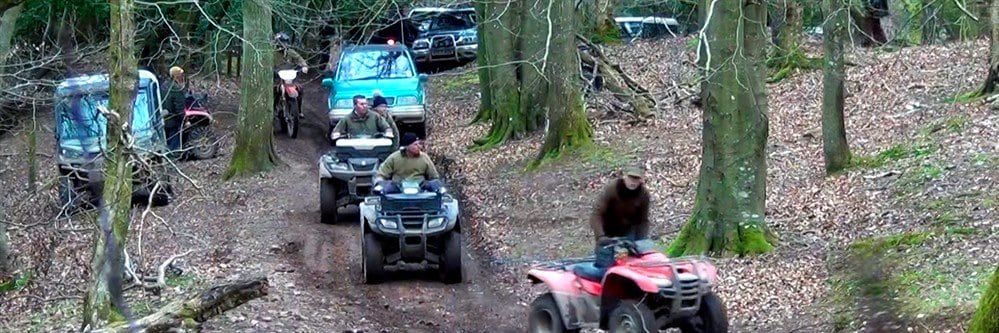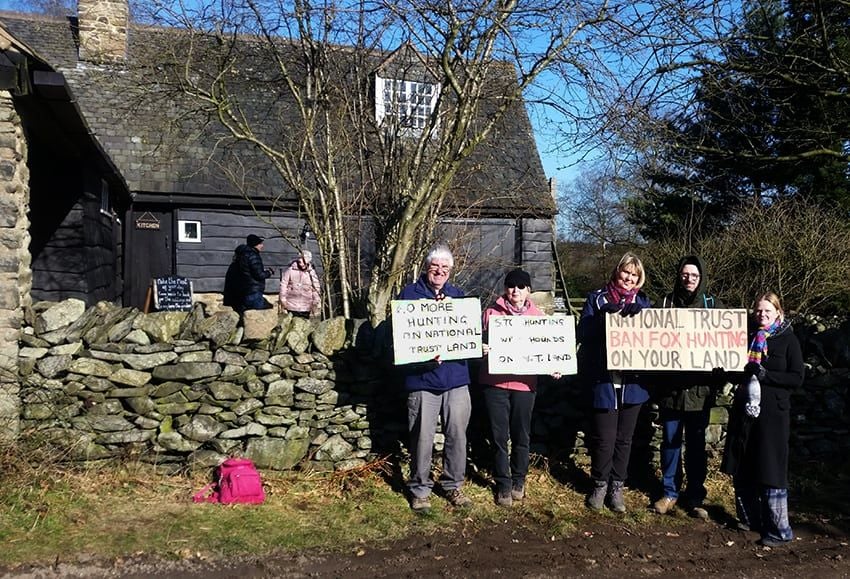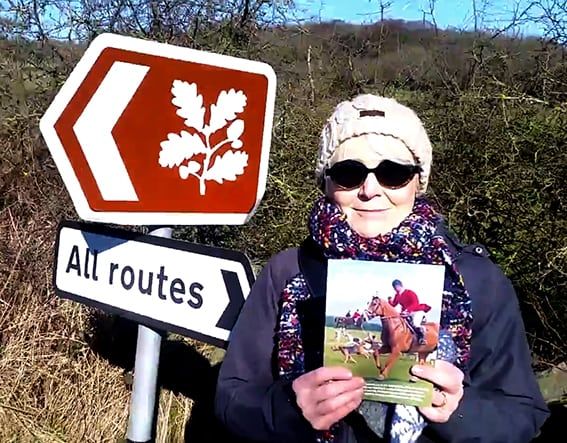After a highly controversial vote at last year’s AGM, which may face a legal challenge over what many regard as an inappropriate use of proxy votes, the Trust decided to continue to permit hunting on its land. This was in the face of highly vocal opposition from ordinary members, some of whom threatened to cancel their membership as a result.
The Trust allows trail hunting using an artificial scent and claim this is in keeping with the 2004 Hunting Act, although the Act makes no reference to trail hunting, a practice that only came into being after the hunting ban.
Trail laying is the preference of fox hunters as opposed to the more established practice of drag hunting which instead uses a completely artificial, non-fox scent that the dogs are trained to follow.
Trail hunters say they use fox urine, the rationale being that if the ban is overturned, their hounds will still be sensitised to track wild foxes. Campaigners claim that this is also a rouse to facilitate the continued hunting of real animals, by ‘accident’.
There’s also evidence that trails are not actually being laid at all. An FOI request to the Animal & Plant Health Agency about the importation of fox urine from North American fur farms (a commonly cited source) returned evidence that no fox urine had been imported between 2014-17 at all.
But now there are problems for these hunts on National Trust land. After the vote last year, a number of changes were introduced to the way the NT would licence hunting, the most important of which is a ban on the use of fox derived scents, specifically to prevent hounds accidentally picking up the trail of a real fox.
The other bone of contention are the terrier men who follow the main hunt, usually on quad bikes, traditionally with terrier dogs in boxes.

In the days before the ban, their job was to dig out any foxes and use dogs to flush them out of cover. The necessity of these men in a post ban environment is now questionable and the NT will not officially allow them on their land. Even so there are reports of them being seen in the vicinity.
These are also the men who have often been reported and videoed violently attacking hunt monitors, altercations which have led to serious injuries and some criminal convictions. There’s a prevailing belief amongst hunt monitors that terrier men are kept on standby by hunt masters and called in to disrupt monitoring operations and assist in ensuring ‘accidental’ kills are more likely.
As a result of these new restrictions it’s no surprise that the NT have licenced relatively few hunts so far and have already had to sanction some of those they have for infractions of the rules.
Even so unlicensed hunts have allegedly trespassed on to Trust land, with monitors claiming that very little action has been taken despite The Trust’s promise to liaise with wildlife crime units.
There have also been incidents where foxes have been chased and attacked by licenced hunts on National Trust land. On one occasion a fox was torn to pieces in full view of horrified visitors. This all adds evidence to claims that many hunts are now totally out of control.
Nationally, trespass and recklessness by hunters is becoming more frequent. Incidents have been reported where hounds have strayed onto public highways and private gardens, businesses and even animal sanctuaries, causing damage as well as death and injury to people and animals.
The growing impression is of hunters and their entourage showing complete disregard for the rules that the rest of us would be expected to follow, not least in terms of control of dangerous dogs. In that context it’s clear that few of these organisations have the ability or the inclination to obey the law.
It follows that they’d be just as unlikely to follow the rules laid down by the National Trust, especially given the belief that some pro-hunting trustees may turn a blind eye. The Trust’s relatively feeble sanctions applied to offending hunts so far, involving a few days suspension or a warning letter, would seem to support this view.

Misgivings about the Trust’s motivations led to the formation of The National Dis-Trust in 2014. A campaigning group who organise regular peaceful protests outside NT properties, maintaining the pressure for a full hunting ban on their land.
The Trust maintains they are taking a more transparent approach with the visiting public, but this seems a hollow claim. It’s well documented now that foxes are still frequently killed by hunts, so it could be argued that the NT are tacitly condoning animal abuse on their land, something I doubt any members would support.
Hunt monitors and the National Dis-Trust group are amassing evidence of trespass and illegal hunt activity on NT land to add pressure on to trustees who are refusing to allow a further vote on hunting for at least another 2 years.

Considering the PR disasters some charitable trusts are currently weathering, it would seem prudent for an organisation like the National Trust not to invite similar opprobrium, especially when finances are already tight.
Perhaps it would be better for them not to risk their ability to continue with the valuable work they undoubtedly do, simply to facilitate the anachronistic and barbarous pastime of a small minority of people, many of whom are probably not even NT members.
Quite how long the Trust will be able to walk the line between keeping all sides in the hunting debate appeased is anyone’s’ guess. But in keeping with the fate of foxes and other wildlife at risk from hunters in our countryside at the moment, I don’t think it’ll be long before this issue comes back to bite them.
RELATED
https://www.thelondoneconomic.com/must-reads/hunter-wont-face-charges-despite-caught-camera-hitting-protester-seventeen-times-crop/10/01/

